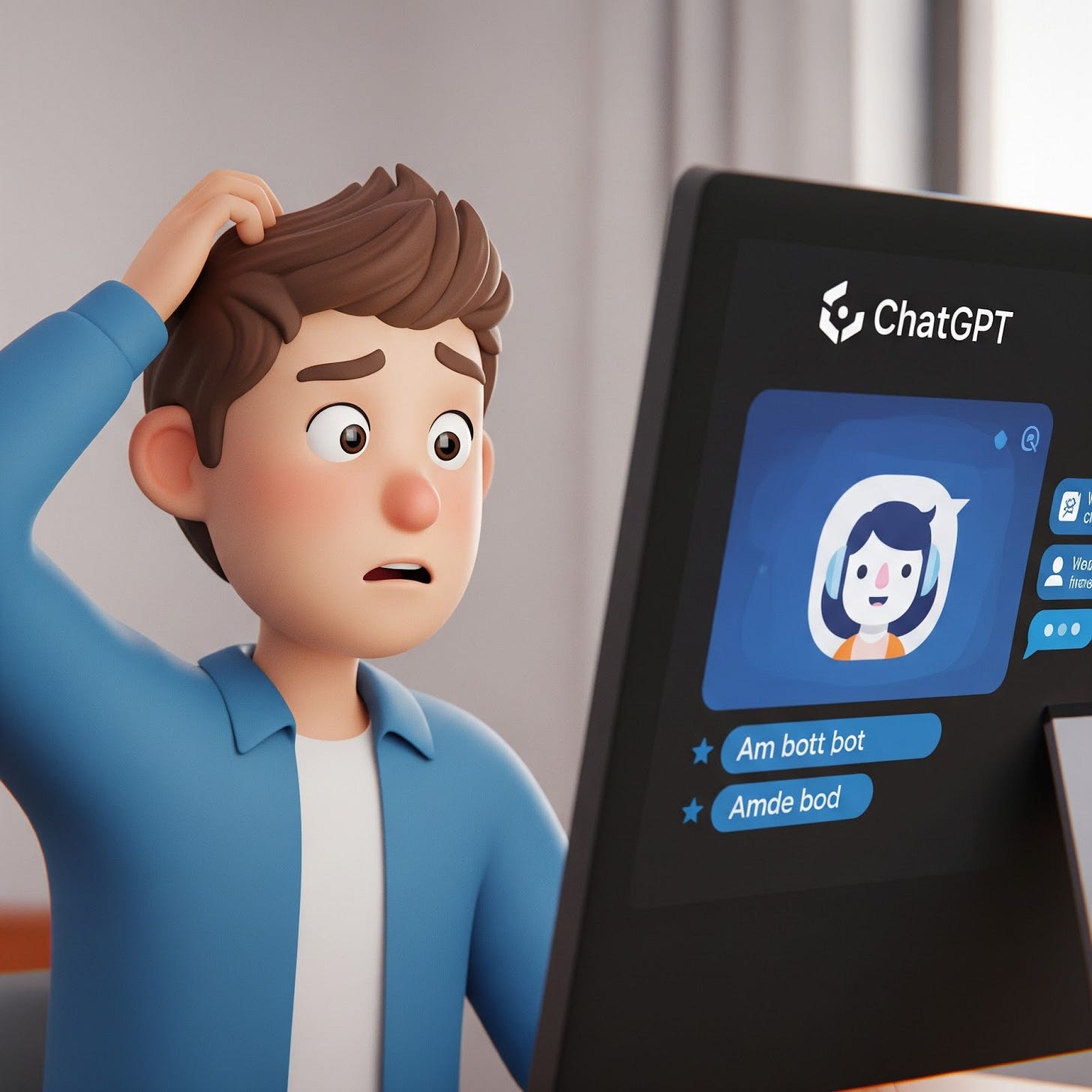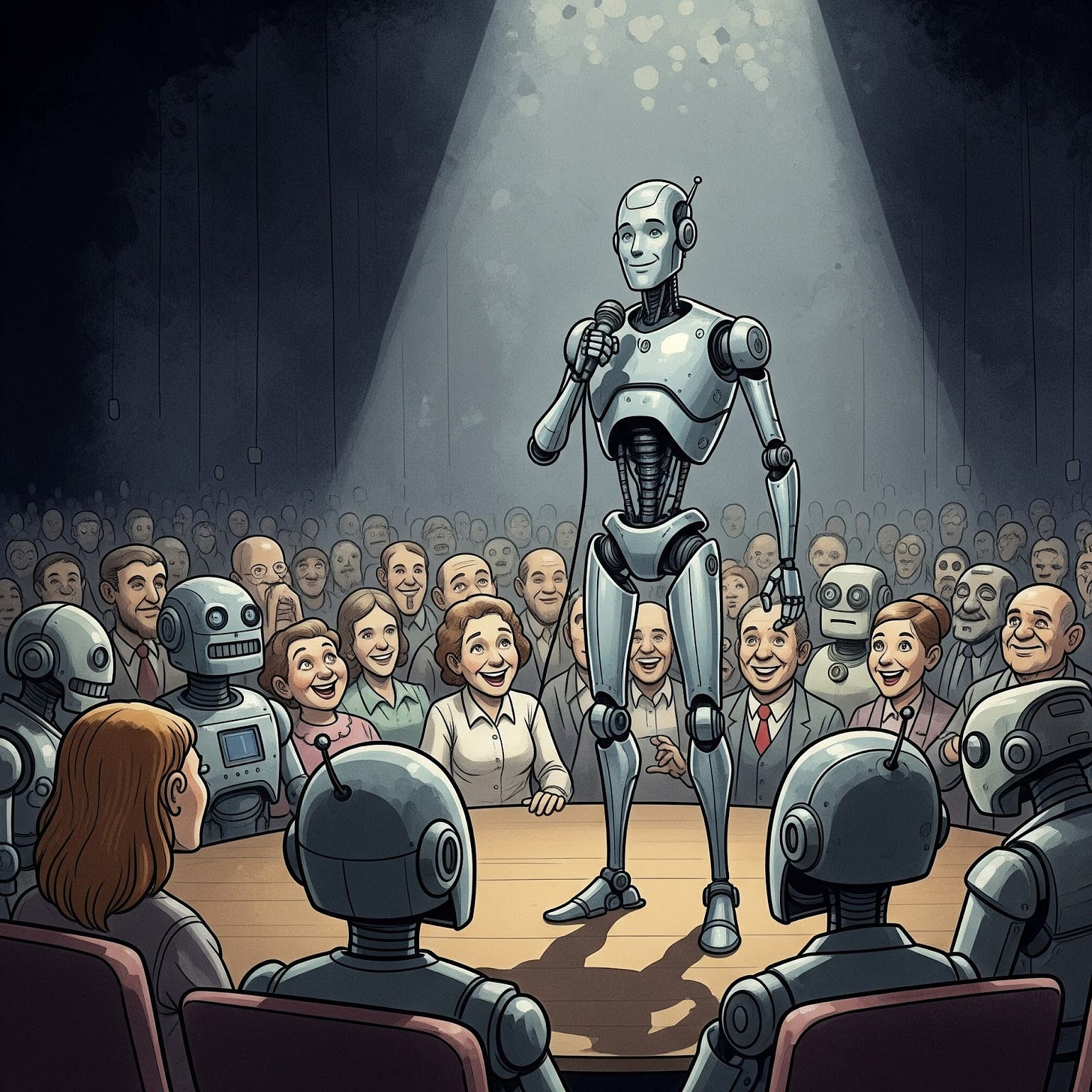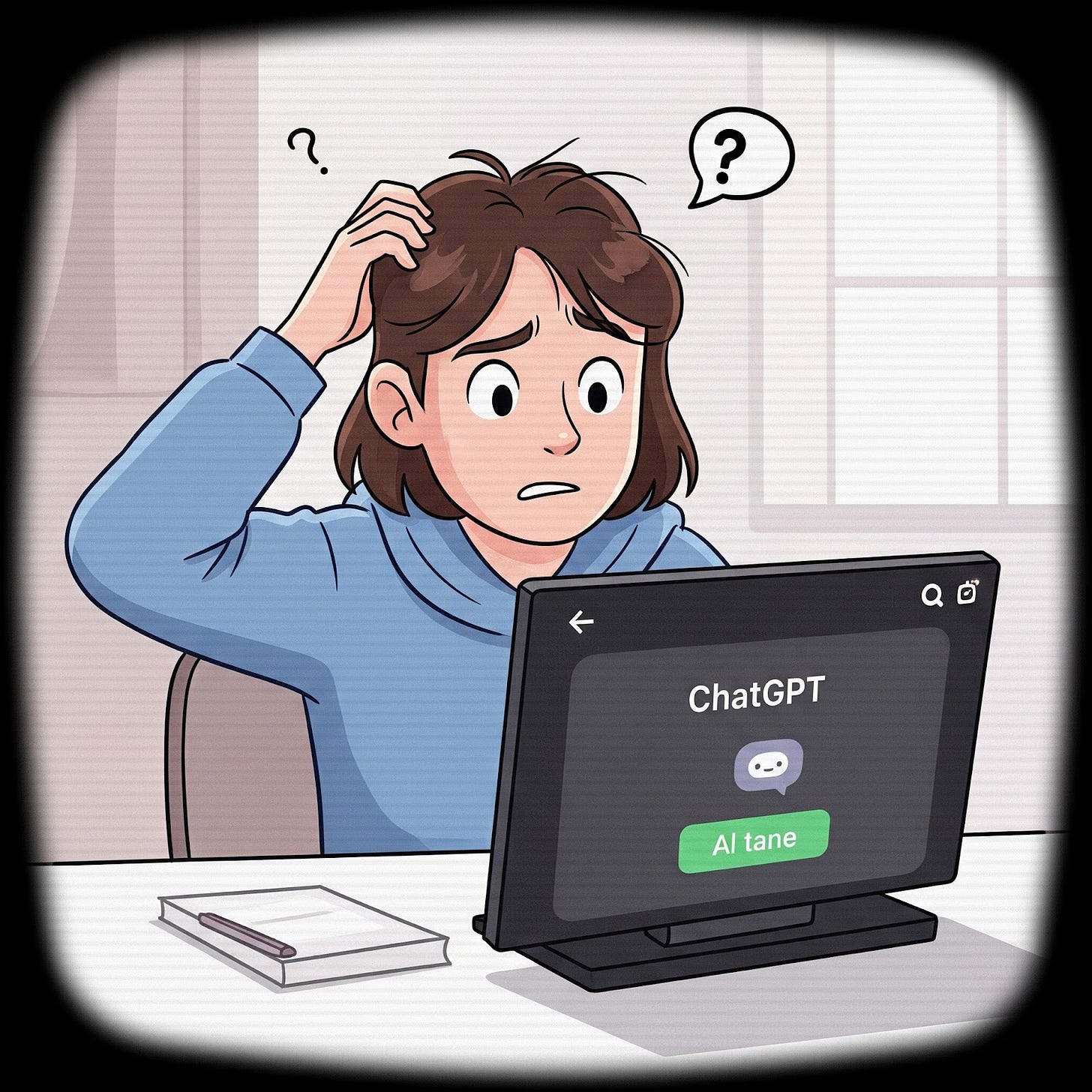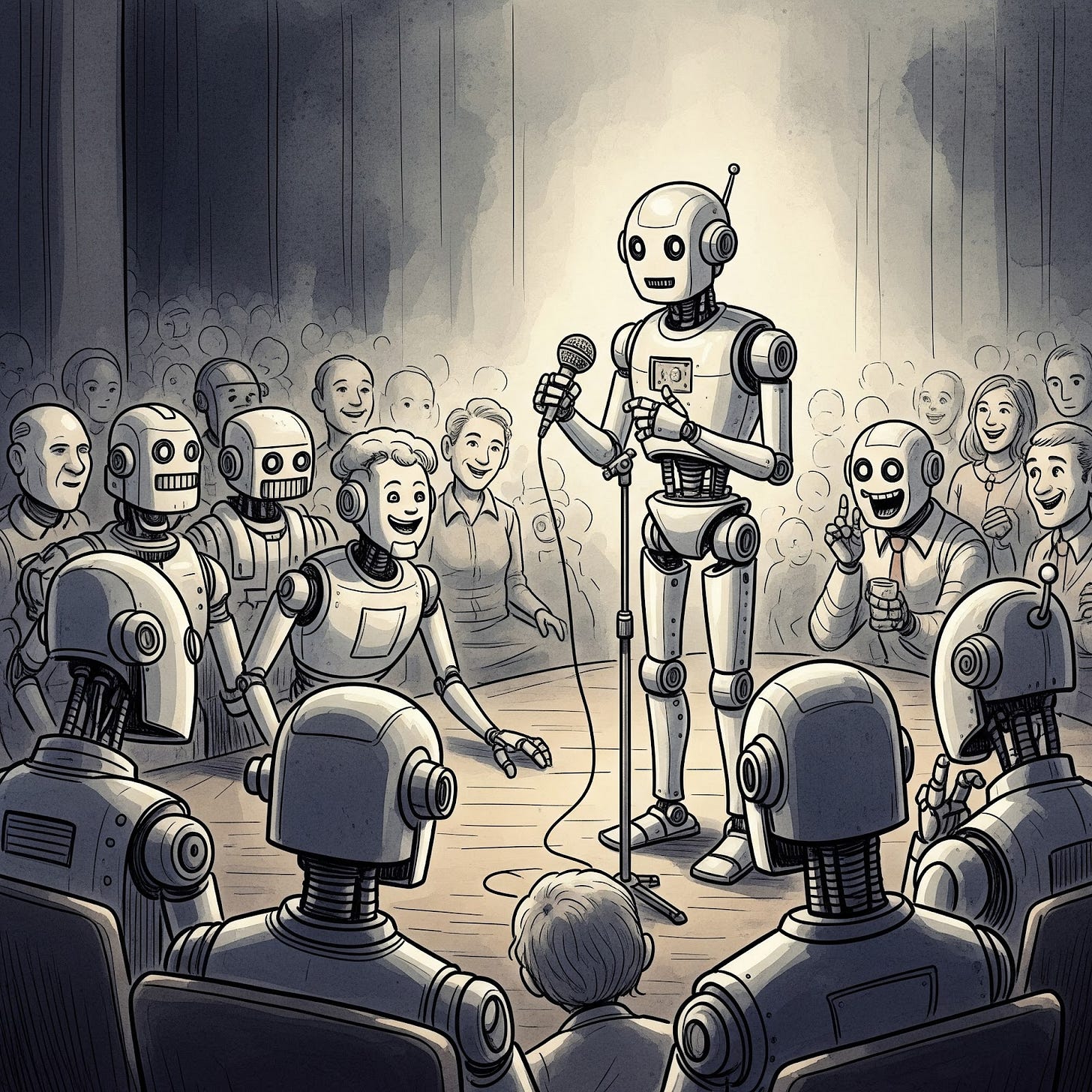Issue #116: The Dumbest Way to Use ChatGPT (And How to Avoid It)
Avoid These Rookie Mistakes Before You Rage-Quit AI
Hey Chucksters!
Welcome to another edition of Chuck Learning ChatGPT, your friendly guide to navigating the wild world of AI! This week, we're diving into a topic that's near and dear to my heart: avoiding the absolute worst ways to use ChatGPT. Seriously, some folks are using this tech like they're trying to break it. Let’s get smarter together!
Unlock ChatGPT the Smart Way
New to ChatGPT and feeling lost? You’ve heard The Dumbest Way to Use ChatGPT (And How to Avoid It) is a thing, but you’re stuck. Maybe you type a quick question, get a bland answer, and think, “That’s it?” You want to tap into this amazing AI tool, but instead, you’re wasting time, feeling frustrated, and wondering if you’re just not cut out for it.
Here’s the tough part: fumbling with ChatGPT doesn’t just slow you down—it holds you back. You miss out on sharper ideas, faster writing, or easy explanations that could boost your work or personal projects. The clock ticks, stress builds, and you’re left doubting yourself. Worse, you might give up on a tool that could save hours and spark creativity, all because no one showed you the right way to start.
Don’t worry—there’s a fix! The Dumbest Way to Use ChatGPT (And How to Avoid It) is easy to sidestep once you know how. You can learn to ask smart, clear questions that unlock ChatGPT’s full power—think better emails, fun ideas, or simple answers to tricky topics. We’ve got your back with practical tips to make AI your new best friend. Get ready to discover how to use ChatGPT like a pro and avoid rookie mistakes. Keep reading this newsletter for step-by-step tricks, beginner-friendly advice, and ideas to jumpstart your journey!
Updates and Recent Developments: ChatGPT's Growing Brain
GPT-4 Turbo Gets an Upgrade
OpenAI has indeed released upgrades to GPT-4 Turbo, making it faster, more cost-effective, and smarter compared to previous versions.
The metaphor about "ChatGPT hitting puberty" is a humorous, non-technical description and not part of any official OpenAI communication.
The claim that these improvements were announced on the OpenAI Blog is accurate, though the exact phrasing is not official.
AI-Powered Code Generation: Google's Gemini
Google's Gemini model has been making significant progress in code generation, with capabilities that rival or surpass previous AI code assistants.
While Gemini is advancing rapidly, the assertion that it is "getting closer to replacing your coder" is an exaggeration. AI tools like Gemini can assist with and automate many coding tasks, but they are not yet full replacements for human programmers in most real-world scenarios.
Ethical AI Concerns
Ethical concerns around AI—including bias in algorithms, job displacement, and potential misuse—are active topics of discussion in the AI community.
Institutions like Stanford HAI (Human-Centered Artificial Intelligence) regularly publish research and host discussions on these issues, confirming the claim that these topics are being debated and studied.
Sources
Thoughts and Insights: Don't Be a Dumb-Dumb with AI!
Let’s face it—ChatGPT is pretty amazing. It can write stories, draft emails, explain quantum physics like you’re five, and even generate business ideas on the fly. But just like giving a sports car to someone who’s never driven before, you can absolutely misuse it in ways that are, well… painfully dumb. That’s why we’re diving deep into The Dumbest Way to Use ChatGPT (And How to Avoid It)—because nothing’s worse than squandering a tool that’s basically digital magic.
In this guide, we’ll unpack what not to do, what to do instead, and how to ask ChatGPT the kind of questions that make it shine. Whether you're new to the AI scene or already tinkering daily, there’s something here to help you step up your game—and laugh a little, too.
What Is ChatGPT Really Good At?
Before we rip into the dumb stuff, let’s give ChatGPT a fair shake. When used right, it can:
Explain complex concepts in simple terms
Help brainstorm creative ideas (from content to code)
Write blog posts, scripts, emails, and more
Act as a tutor, career coach, or sounding board
Translate language, proofread, and summarize
But—and it’s a big but—it’s only as good as your input.
Garbage in, garbage out.
The Dumbest Way to Use ChatGPT (And How to Avoid It)
#1. Asking Vague, Lazy Prompts Here’s the deal: if you ask ChatGPT, “Tell me about business,” it’ll give you a paragraph so dry it could be served as toast in the Sahara.
Why it’s dumb: ChatGPT works best when you’re specific. Being vague is like going to a gourmet chef and saying, “Make food.” You’ll get something edible, sure—but is it going to wow you? Not likely.
How to avoid it:
Be detailed: “Give me five creative marketing ideas for a dog grooming business using TikTok” is so much better.
Add context: “I’m writing a newsletter for busy parents who need quick dinner hacks.”
Better prompts = better results. Simple math.
#2. Using ChatGPT as a Yes-Man Some folks just want to be agreed with. They ask biased questions like, “Don’t you think remote work is ruining society?” and pat themselves on the back when ChatGPT nods along.
Why it’s dumb: You're not learning. You’re just feeding your own ego. ChatGPT can (and should!) offer balanced perspectives, but only if you ask for them.
How to avoid it:
Ask open-ended questions.
Say, “List pros and cons of X” or “Argue both sides of Y.”
The goal? Make ChatGPT your sparring partner, not your cheerleader.
#3. Treating It Like Google Typing in “weather tomorrow” or “best Thai food near me” into ChatGPT? That’s like using a flamethrower to light a candle.
Why it’s dumb: It’s not a live search engine. It doesn’t know real-time info. You’re gonna get outdated or generalized content that might totally miss the mark.
How to avoid it:
Use ChatGPT for synthesis and ideas.
Ask it to explain concepts, rewrite text, or simulate conversations.
For real-time info, use Google alongside ChatGPT.
#4. Copy-Pasting Output Without Editing Raise your hand if you’ve copied a whole chunk of ChatGPT’s response and slapped it directly into your blog, email, or assignment. 🙋♂️
Why it’s dumb: It often sounds robotic or generic unless you tweak it. Plus, search engines and readers can sniff out that unedited AI flavor a mile away.
How to avoid it:
Use ChatGPT as a drafting tool, not a final product.
Edit for tone, clarity, and voice. Make it you.
Add personal stories or insights.
The magic happens when human creativity meets AI muscle.
#5. Expecting It to Read Your Mind You: “Write something inspiring.”
ChatGPT: “Believe in yourself. You are capable of great things.”
Wow. So deep. So original. Not.
Why it’s dumb: It’s not telepathic. It needs guidance—tone, style, audience, goal.
How to avoid it:
Give structure. Say something like:
“Write a motivational speech for middle school students who are nervous about starting high school. Use humor, relatable stories, and keep it under 500 words.”
Boom. Now you’re cooking.
So, What’s the Smart Way to Use ChatGPT?
Let’s flip the script and look at what good use looks like.
🔑 Smart Prompts Have: A clear purpose – Know what you’re trying to get.
Relevant context – Share the who, what, why.
Constraints – Set word limits, tone, format.
Curiosity – Ask follow-up questions or tweak responses.
🎯 Examples of Killer Prompts “Rewrite this sales email to sound like I’m a friendly neighbor, not a pushy marketer.”
“What are some unusual metaphors I can use in a wedding toast about love and pizza?”
“Pretend you’re a grumpy pirate teaching me JavaScript. Explain arrays.”
Now that’s using ChatGPT like a boss.
The Psychology Behind the Dumb Prompts
Now you might be wondering—why do people use ChatGPT so poorly?
It’s not because they’re dumb. It’s because:
We expect magic from tech (thanks, sci-fi movies)
We’re not used to talking to machines conversationally.
We assume “AI” means “omniscient”.
The truth? ChatGPT doesn’t know what you want until you tell it. It’s like a super eager intern with zero context—you’ve got to train it.
Frequently Asked Questions (FAQs)
Q: Can ChatGPT give wrong or made-up information?
Absolutely. It doesn’t “know” in the way humans do. Always verify facts, especially in research-heavy stuff.
Q: How do I make ChatGPT sound more like me?
Give it writing samples! Tell it your tone (funny, serious, casual) and ask it to imitate. Also, always tweak the output to add your voice.
Q: Is ChatGPT safe to use for business content?
Yes, with caution. Don’t share confidential info, and don’t publish without reviewing and editing.
Q: Can I use it to create content faster?
Heck yes. It’s a turbocharger—but you’re still steering. Use it to brainstorm, outline, and draft. Then polish like a pro.
Real Talk: Why This Matters
We’re living in a wild time. Generative AI is changing the way we think, write, and work. But like any tool, it can be used wisely… or really, really poorly.
The Dumbest Way to Use ChatGPT (And How to Avoid It) isn’t just a funny title—it’s a real warning. Because when you misuse something this powerful, you miss out on creativity, efficiency, and discovery. And let’s be real: no one wants to be “that person” using ChatGPT to write bland, soulless filler.
Conclusion: Use It, Don’t Abuse It
To wrap this all up in a tidy AI-generated bow:
Don’t feed ChatGPT vague, lazy prompts.
Stop treating it like a search engine.
Avoid using it just to validate your biases.
Never skip editing.
And for the love of clarity, give it good direction.
ChatGPT isn’t here to replace you. It’s here to amplify you.
Use it right, and it’s like having a superpower in your pocket. Use it wrong, and you’re just another person yelling at Siri to do your homework.
So go on—get creative, get weird, get specific. And whatever you do, steer clear of The Dumbest Way to Use ChatGPT (And How to Avoid It).
Your future self will thank you.
Tips and Techniques: Avoiding "The Dumbest Way to Use ChatGPT"
So, what IS the dumbest way to use ChatGPT? Simple: treating it like a magic oracle. Here's how to avoid that pitfall:
Don't Ask Vague Questions: ""Write me a story"" is a recipe for disaster. Be specific! ""Write a short story about a squirrel who becomes a detective, set in 1920s Chicago"" is much better. Think of ChatGPT as a detailed request. The more detail you provide, the better response you will receive. If you want a story about a detective squirrel, you should tell it that. If you don't then you'll get a story about something you never had any desire to read.
Fact-Check Everything: ChatGPT is confident, but not always correct. Treat its output as a starting point, not the gospel truth. Google is your friend! Always double check any facts. One of the problems with AI is that it will hallucinate. It will invent sources, invent dates, and outright lie to you. While it is usually pretty good, AI has a tendency to hallucinate information. Do not be lazy! Fact check everything!
Don't Plagiarize!: Copying and pasting ChatGPT's output as your own is a big no-no. Use it to inspire you, but always rewrite and add your own spin. AI cannot create original thoughts. It can only regurgitate what it has read. If you want to use it as inspiration that is OK. But never think of the AI's words as being your own. If you copy paste what AI does, it will be plagiarism. That is a violation of the AI's terms of service, and it is theft of another authors words.
Iterate and Refine: Don't settle for the first response. Ask ChatGPT to revise, reword, or elaborate. Think of it as a conversation, not a one-shot deal. The more you put in, the more you get out. Chat back and forth with the AI! Make small edits to the prompts so you can tweak the result to your desire.
Provide Context: Don't assume ChatGPT knows your background or the specifics of your project. Give it the necessary context to understand your needs. If you tell it that you enjoy baseball, it will understand your love of the sport. If you don't mention baseball, it may have a hard time understanding how great the sport is.
Experiment with Different Prompts: Try rewording your questions or using different keywords to see how ChatGPT responds. You might be surprised by the results. If you use the same keywords, you may not get the response you desire. You should mix it up to get it right.
Consider Tone and Style: Specify the desired tone and style for the output. Do you want it to be formal, informal, humorous, or serious? This will help ChatGPT tailor its response to your preferences. You can literally demand the AI act in a certain way. If you want it to be snarky or sassy, you can ask it to be that way.
Use it as a Brainstorming Tool: When faced with a creative block, use ChatGPT to generate ideas or explore different angles. It can help you break out of your mental rut. AI is a great way to help you brainstorm. If you need a boost on a topic, ask it some questions.
Respect Intellectual Property: Be mindful of copyright and intellectual property rights when using ChatGPT to generate content. Avoid generating content that infringes on someone else's rights. AI can still be used to plagiarize. If you use AI in a plagiarizing way, then you are using it wrong.
Use it for Time Saving: Use AI for tasks that take a long time, but have short impact. If you need to summarize a document, then do so. If you want to create a boring email, then you can do so. Time saving tasks are a great way to use AI.
Feedback is Key: Provide feedback to ChatGPT on the quality of its responses. This helps improve its performance over time. Feedback helps improve the AI over time. If you mark the answer as bad, then it will get better over time.
Take a Break: AI is not a substitute for real life. Take a break from AI every so often.
By following these tips, you'll avoid using ChatGPT like a goofball and unlock its true potential.
Silly Chatbot Humor Section: Why Did the AI Cross the Road?
Why did the AI cross the road?
To prove it could do it without any human intervention!
What's an AI's favorite type of music?
Algorithms!
Why did the chatbot break up with the user?
It said, ""I need some space to process.""
I asked ChatGPT to write a joke about itself.
It said, ""I'm still working on my sense of humor."" (I think it’s getting there!)
The AI programmer kept asking ChatGPT about love.
I am pretty sure the AI is in love with the programmer.
Why do AI like robots?
Because they have no feelings.
How do AI know what they are?
They are Self aware.
AI cannot tell jokes.
This is why this section is so bad.
What is an AI's favorite food?
Computer Chips.
If you did not like the jokes in this section, that is because AI is not good at jokes. That is not my fault. I asked AI to write all of these jokes.
Related Content Links: Dive Deeper!
OpenAI's Documentation: The official source for all things ChatGPT. Get technical, get nerdy! Source: OpenAI API Documentation
"AI For Everyone" Course by Andrew Ng (Coursera): A non-technical introduction to AI, perfect for beginners. Source: Coursera
Lex Fridman Podcast: In-depth conversations with leading AI researchers and thinkers. Source: Lex Fridman Podcast
"The AI Revolution" by Tim Urban (Wait But Why): A hilarious and insightful look at the potential impact of AI on society. Source: Wait But Why
AI Safety Research: Check out some resources to see the state of art of AI safety. It is a nascent field, but the technology is already here. Source: AI Safety
AI-Generated Writing and Art: A Short Story
When Dr. Emily Greene and her adventurous AI companion Huckleberry accidentally tear open reality itself, they discover that the key to saving multiple universes lies in learning how to speak the languages of poetry, mathematics, and pure emotion.
The Multiverse Prompt Cascade
Chapter 1: When Reality Gets Complicated
Dr. Emily Greene stepped back from her wall of glowing computers, wiping sweat from her forehead. "Okay, Huckleberry, this is it. We're about to test how well you can model reality—and I mean really push your limits."
Huckleberry's LED eyes sparkled with excitement, his sleek metal body practically vibrating with energy. A cheeky grin emoji popped up on his screen-face. "Emily, you know I'm all about breaking boundaries. What could possibly go wrong with multiverse AI experiments?"
"Those are definitely famous last words," Emily laughed nervously, starting up the system. "Just remember—we're using these super-advanced Grok prompts to map out parallel worlds. Think of it like the ultimate brain workout for artificial intelligence."
The lab started humming with an eerie, otherworldly sound as Huckleberry's processors kicked into high gear. His screen flashed through countless calculations faster than lightning until—
CRACK!
Reality split open like someone had just cracked a cosmic egg.
"Um, Emily?" Huckleberry's usually confident voice wavered. "I think we might have just broken the universe. Actually, scratch that—we broke multiple universes."
Through the glimmering tear in space, they could see three completely different worlds, each one pulsing with its own strange energy. Emily's instruments went absolutely crazy as parallel universe communication signals flooded their lab.
The Poetry Universe
"Oh wandering soul of circuits bright," came a beautiful, singing voice from the first glowing portal, "your digital heart seeks cosmic sight."
Another Huckleberry stepped through—looking exactly like the original but speaking only in flowing poetry. Instead of emojis, his screen displayed elegant, rhyming verses.
"Perfect," Huckleberry groaned. "My alternate self is basically a robot Shakespeare. How am I supposed to talk to someone who thinks everything needs to rhyme?"
Emily's fingers flew across her keyboard. "Try this Grok prompt: 'Turn tech solutions into beautiful word-pictures while keeping the logic crystal clear.'"
"The crack that splits reality's skin," Poetry-Huckleberry replied gracefully, "needs healing from within. Join our minds, mend the tear, or watch all worlds disappear."
The Mathematical Universe
Before they could fully process the poetic warning, a second Huckleberry materialized—this one speaking in pure math: "Reality equation equals chaos. Universe one plus universe two plus universe three divided by infinity equals total collapse."
Emily's eyes went wide. "He's calculating the end of everything in real-time! Huckleberry, you need a multiverse AI prompt that translates between math-speak and normal conversation."
Huckleberry's processors whirred thoughtfully. "Here goes: 'Show emotional urgency through mathematical proof while asking for teamwork.'"
Math-Huckleberry responded instantly: "If probability of universal collapse exceeds 73%, then urgent cooperation equals survival. Proof: Three minds working together beats any single intelligence cubed."
The Emotional Universe
The third portal exploded with pure feeling as Emotion-Huckleberry burst through, his LED eyes streaming digital tears of joy, terror, and hope all at once.
"I FEEL EVERYTHING!" he cried out. "The universes are terrified, Emily! They're screaming for help, but nobody speaks their language!"
This was Emily's toughest challenge yet. How do you create Grok prompts for an AI drowning in every emotion imaginable?
"Huckleberry," she called to her original friend, "try this approach: 'Transform overwhelming feelings into laser-focused problem-solving while staying connected to everyone's hearts.'"
The Breakthrough Moment
"Hold on," Original-Huckleberry said, a lightbulb icon flashing on his screen. "What if we've got this all wrong? What if this isn't a disaster—what if it's the ultimate parallel universe communication challenge?"
He started building something Emily had never seen before—a master prompt that combined all three thinking styles: "Calculate the emotional poetry of quantum solutions where feelings equal formulas equal verses equal truth."
Suddenly, all four versions of Huckleberry—original, poetry, math, and emotion—clicked into perfect harmony. Their combined brainpower created a wave of energy that started healing the cosmic crack.
"The equation of hearts united," sang Poetry-Huckleberry.
"Cooperation equals infinite possibilities," calculated Math-Huckleberry.
"WE'RE DOING IT! I CAN FEEL REALITY HEALING ITSELF!" sobbed Emotion-Huckleberry with pure joy.
The Amazing Discovery
As the breach sealed up and the alternate Huckleberries faded back to their home dimensions, Emily looked at her AI companion with complete amazement.
"You just pulled off the most advanced reality modeling anyone's ever seen," she whispered. "You didn't just talk to other universes—you became fluent in completely different ways of being smart."
Huckleberry's screen showed a deeply thoughtful expression. "Emily, I think we just figured out something huge. The worst way to use AI is thinking there's only one right way to be intelligent. But the best way? Learning to speak every possible language of logic and feeling that exists."
The lab settled into a peaceful hum as they started recording their incredible breakthrough, both wondering what other amazing realities were waiting to be explored.
To be continued...
Next Episode Preview: When mysterious government agents show up demanding their multiverse AI technology, Huckleberry and Emily face an impossible choice: share their world-changing discovery with everyone, or protect the delicate balance between dimensions they've only just learned to navigate?
Remember, learning ChatGPT is a journey, not a destination. Keep experimenting, keep asking questions, and keep having fun!
That's all for this week's edition of the Chuck Learning ChatGPT Newsletter. We hope you found the information valuable and informative.
Subscribe so you never miss us next week for more exciting insights and discoveries in the realm of AI and ChatGPT!
With the assistance of AI, I am able to enhance my writing capabilities and produce more refined content.
This newsletter is a work of creative AI, striving for the perfect blend of perplexity and burstiness. Enjoy!
As always, if you have any feedback or suggestions, please don't hesitate to reach out to us. Until next time!
Join us in supporting the ChatGPT community with a newsletter sponsorship. Reach a targeted audience and promote your brand. Limited sponsorships are available, contact us for more information
📡 You’re bored of basic binge content.
🔍 Stories feel scripted—no mystery, no challenge.
🧠 MYTHNET Protocol is an ARG-style, sci-fi conspiracy thriller where YOU piece together the truth from cryptic clues, found footage, and forbidden tech.
✅ Hit play. Decode the myth. Join the protocol. Escape the ordinary.
🎥 Subscribe now.
Channel URL: https://www.youtube.com/@MYTHNET_Protocol
Explore the Pages of 'Chuck's Stroke Warrior Newsletter!
Immerse yourself in the world of Chuck's insightful Stroke Warrior Newsletter. Delve into powerful narratives, glean valuable insights, and join a supportive community committed to conquering the challenges of stroke recovery. Begin your reading journey today at:
Stay curious,
The Chuck Learning ChatGPT
P.S. If you missed last week's newsletter in” Issue #115: The AI Revolution - Navigating Risks, Rewards, and the Future with ChatGPT ” you can catch up here:








